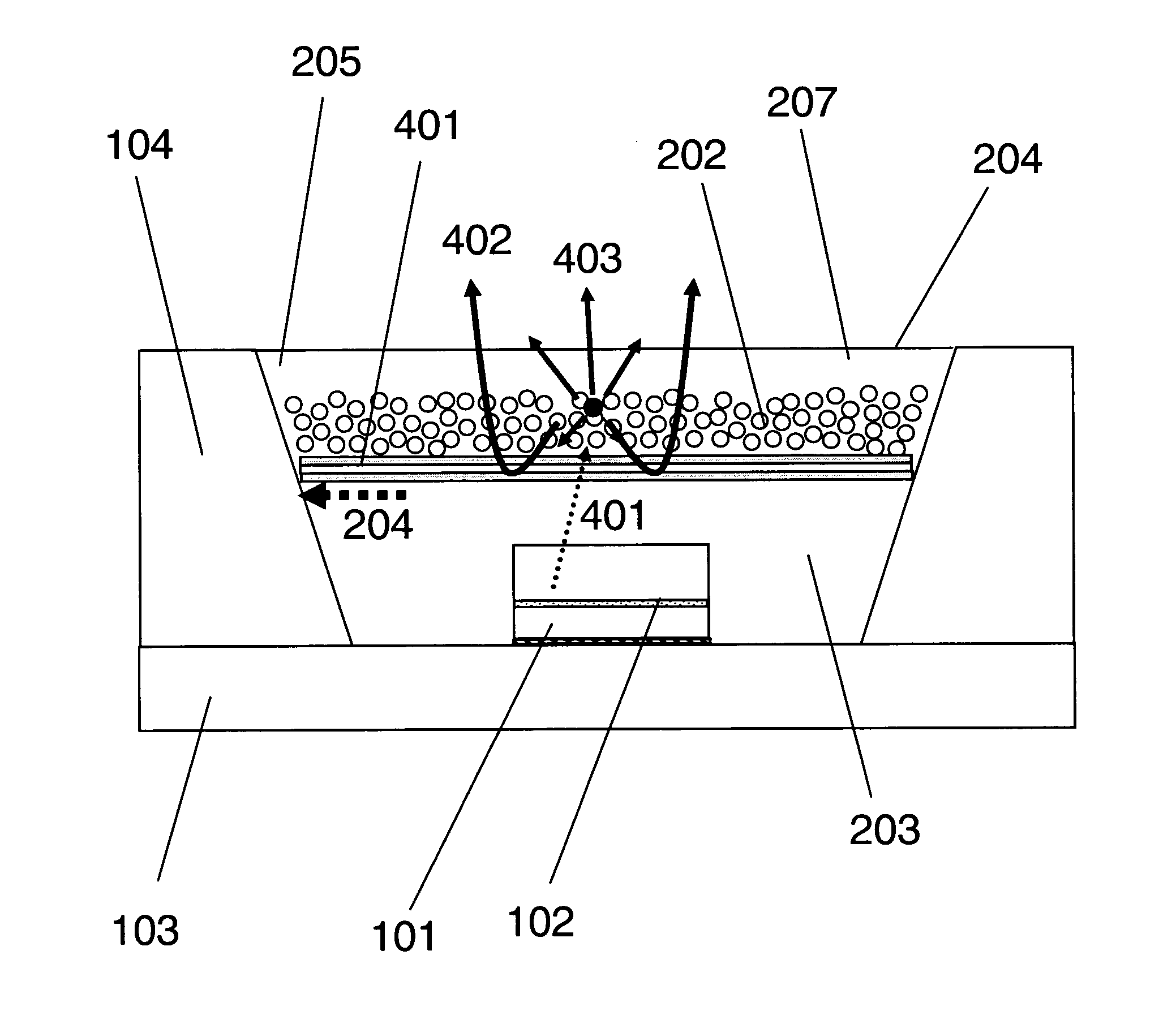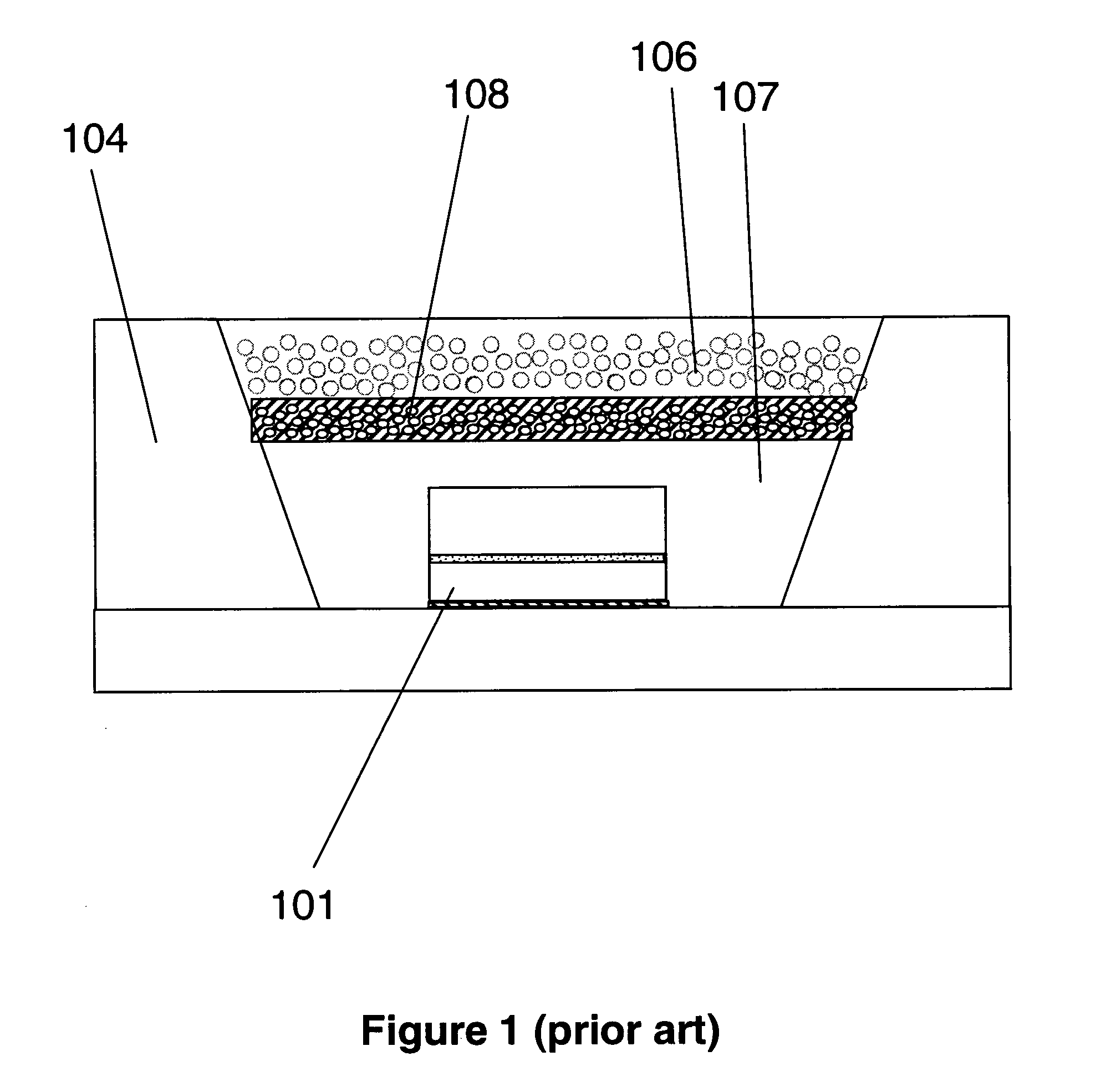Light emitting module with optically-transparent thermally-conductive element
a technology of thermal conductors and light emitting modules, which is applied in the direction of solid-state devices, basic electric elements, electric devices, etc., can solve the problems of increasing the thermal load of the device, affecting the overall efficiency of the led, and adding cumbersome additional reflective surfaces to re-inject, etc., and achieves cost-effective effects. , the effect of prolonging the li
- Summary
- Abstract
- Description
- Claims
- Application Information
AI Technical Summary
Benefits of technology
Problems solved by technology
Method used
Image
Examples
Embodiment Construction
[0045]An object of the present invention is to provide a light emitting module comprising of a high luminous output semiconductor light emitting device and wavelength down converting material capable of withstanding a continuous high drive current and high power densities while still maintaining long lifetime and controlled colour temperatures with minimal degradation in characteristics of the wavelength converting element.
[0046]The invention can be incorporated in a light emitting device of any semiconductor material system such as, but not restricted to, InGaN, InGaP, InGaAs, InP, or ZnO. A GaN based light emitting diode (LED) having an epitaxial layer formed on a sapphire substrate is used as an example in the present invention. However, the present invention is not restricted to epitaxial layers grown on sapphire and may include Si, SiC, Ge, native free-standing GaN, AlN, LiAlO or any other growth and substrate technology. Additionally an LED with either a vertical or lateral cu...
PUM
 Login to View More
Login to View More Abstract
Description
Claims
Application Information
 Login to View More
Login to View More - R&D
- Intellectual Property
- Life Sciences
- Materials
- Tech Scout
- Unparalleled Data Quality
- Higher Quality Content
- 60% Fewer Hallucinations
Browse by: Latest US Patents, China's latest patents, Technical Efficacy Thesaurus, Application Domain, Technology Topic, Popular Technical Reports.
© 2025 PatSnap. All rights reserved.Legal|Privacy policy|Modern Slavery Act Transparency Statement|Sitemap|About US| Contact US: help@patsnap.com



